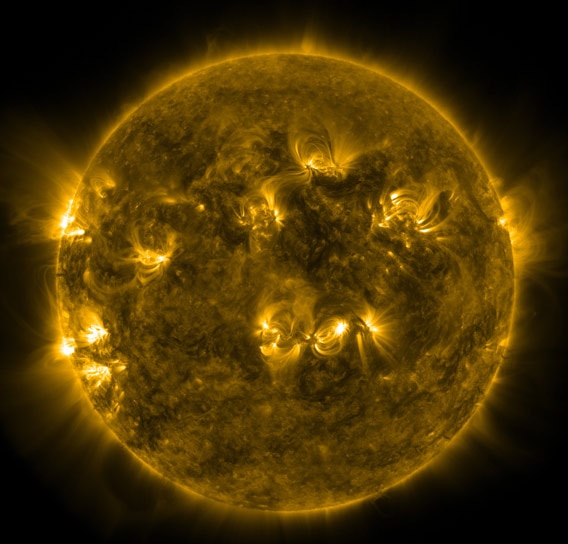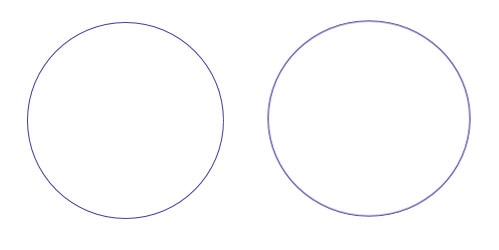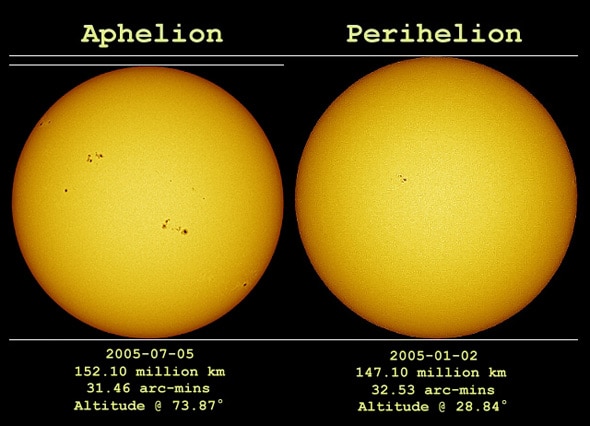Create a free profile to get unlimited access to exclusive videos, sweepstakes, and more!
It's All Uphill From Here: The Earth at Perihelion

At 04:37 UTC today (11:37 p.m. Eastern US time last night), the Earth reached perihelion, the point in its orbit when it’s closest to the Sun for the year. At that time, the center of the Earth was 147,098,161 kilometers from the center of the Sun.
You probably didn’t notice. There were no fireworks, no ball dropping from a spire, no breathless celebrities celebrating it. But it happened just the same, as it did last year, and the year before that, and all the years stretching back to the dawn of our planet 4.5 billion years ago.
The Earth orbits the Sun in an ellipse, not a circle. This fact wasn’t discovered until the early 1600s, when astronomer Johannes Kepler published the first two of his three laws of planetary motion. Until that time, for thousands of years previously, everyone thought the planets orbiting the Sun moved along perfectly circular paths.
But orbit in an ellipse we do, which means sometimes we’re closer to the Sun, and sometimes farther. For the Earth, the difference isn’t all that much: about 5 million km (3 million miles) separate closest and farthest distance from the Sun—very roughly 147 - 152 million km (91 - 94 million miles). It’s a change of only about 3%, which to the eye would make it look pretty much like a perfect circle. In fact, I used Wolfram Alpha to draw a circle and an ellipse with the same shape as Earth’s orbit. Can you see the difference?
The one on the right is the ellipse. Hard to tell, isn’t it?
Some people think that the distance to the Sun is the reason we have seasons. But as you can see, this difference is so small it hardly has any affect at all. There’s some, but it’s small. We’re a little bit cooler on average when we’re farther away, but the tilt of the Earth’s axis is a far bigger influence on temperature than our distance from the Sun. Note that we reach perihelion in January, in the dead of winter for the Northern Hemisphere! That’s the opposite of what you would expect if distance to the Sun alone were the cause of the seasons.
Calculating the exact time of perihelion turns out to be a bit complicated; it’s different every year (last year it was on January 5). I was surprised initially to find out the biggest effect changing the time of perihelion is from the Moon! Upon reflection it makes sense, though. As the Moon orbits the Earth in a big circle 770,000 km (475,000 miles) across, the Earth makes a smaller circle too. Picture it this way: Imagine two children holding hands and spinning each other around. One kid is bigger than the other, so the smaller child makes a big circle, and the bigger kid makes a small circle as they swing around, with both of them revolving around their center of mass (what astronomers call their barycenter). The Moon and Earth are locked together by gravity, but the principle is the same.
Because the Earth makes that smaller circle once per month, the shape of its path around the Sun is a bit wobbly. This can change the time of perihelion by several hours! Astronomers need to account for that when they calculate the time of perihelion.
Not only that, but the distance is calculated between the centers of the Earth and Sun; that’s because the equations used involve gravity, and that is done assuming the objects are actually point sources, literally infinitely small points that have mass and gravity. Given the huge distance between the Earth and Sun compared to their sizes, that math works out pretty accurately. When the Earth was at perihelion, its center was 147,098,161 km (91,402,560 miles). Your exact distance from the Sun at that moment depended on where you were on Earth, your latitude and longitude. But the Earth’s radius is about 6371 km, and the Sun’s is 696,340 km, so their surfaces were about 146,395,450 km (90,965,914 miles) apart.
Roughly.
So what does all this mean? Well, if you very carefully measured the size of the Sun, it would appear a bit bigger today than any other day of the year. The difference is pretty small, as this picture from astrophotographer Anthony Ayiomamitis shows:
That’s the Sun at aphelion (left) perihelion (right), and clearly it’s not a huge deal. You’d never notice.
But it also means that every day, from here on out until we reach aphelion, we’ll be a little bit farther from the Sun, heading upward in our orbit. Then, on July 5, 2013, we’ll reach the top of our orbit, aphelion, and start to head downhill once again.
A lot of people like to make New Year's resolutions, some way to improve their lives starting with the beginning of the year. Have you? If you did, aphelion makes a good benchmark for a checkup. Between now and then the Earth will have moved 468 million km (290 million miles) around the Sun, and will be 5 million km further from it. What will you accomplish in that same time?
[Update: I mistakenly wrote that the last perihelion was on January 2, 2012, when it was in fact on January 5, 2012. It has been corrected in the text above. Also, I wrote that it had been thought planets orbited the Sun in circles, but I should've said that simply that planets moved in circles—the idea they orbited the Sun came along with Copernicus, though he too thought they moved in circles. This has been corrected in the text as well.]
















